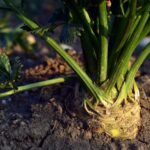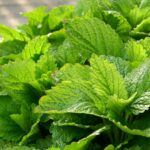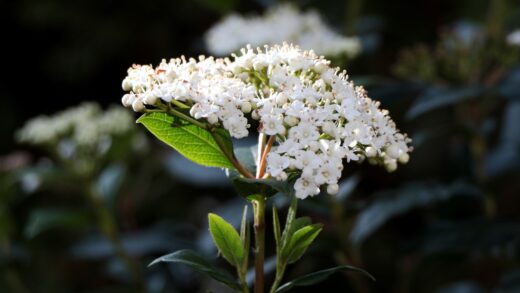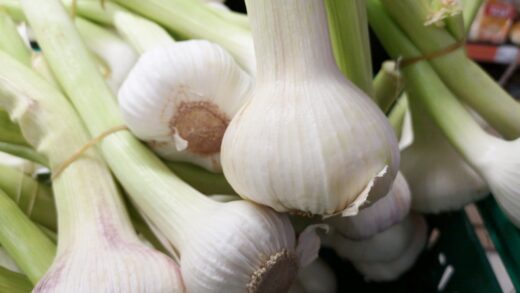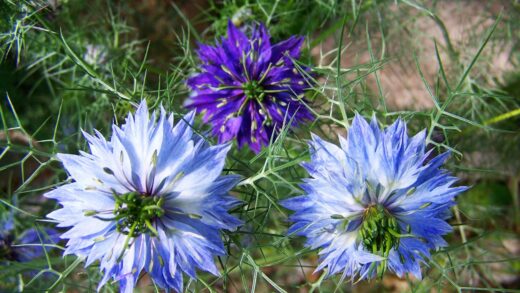While lily of the valley is renowned for its resilience and generally trouble-free nature, it is not entirely immune to challenges from diseases and pests. A vigilant gardener who understands the potential issues can take proactive steps to prevent them and act swiftly to mitigate any problems that do arise. The health of a plant colony is often a direct reflection of its growing conditions; plants that are stressed by poor soil, improper watering, or incorrect light exposure are far more susceptible to attack. Therefore, the first line of defense against any disease or pest is always to provide the best possible horticultural care.
Most of the common issues that can affect lily of the valley are fungal in nature, thriving in the same cool, moist, and shaded conditions that the plant itself prefers. Diseases such as leaf spot and rust can mar the appearance of the foliage and, in severe cases, impact the plant’s ability to photosynthesize effectively. Understanding the life cycle of these pathogens and the conditions that favor their spread is crucial for effective management.
Pests are a less frequent problem for this plant, due in large part to the toxic compounds, cardiac glycosides, present in its leaves, stems, and flowers, which deter most grazing animals and many insects. However, a few specific pests, such as slugs, snails, and certain insect larvae, can occasionally cause damage. Recognizing the signs of their presence and employing appropriate control measures can keep their impact to a minimum.
Ultimately, an integrated approach that combines good cultural practices, regular monitoring, and targeted, responsible interventions is the most effective strategy for keeping your lily of the valley healthy. By promoting good air circulation, managing moisture, and maintaining soil health, you can create an environment where these potential problems are much less likely to take hold, ensuring your plants remain a beautiful and vibrant feature of your garden.
Common fungal diseases
One of the most frequently encountered diseases affecting lily of the valley is leaf spot. This condition is caused by various fungi and typically appears as small, distinct spots on the leaves. The spots may start as yellow or light green and often darken to brown or black as the infection progresses. They may also develop a darker border with a tan or grey center. While a minor infection is largely a cosmetic issue, a severe case can cause the leaves to yellow and die back prematurely.
More articles on this topic
Another fungal issue to be aware of is rust. Lily of the valley rust, caused by the fungus Puccinia sessilis, presents as small, yellow spots on the upper surfaces of the leaves. If you inspect the undersides of the leaves directly below these spots, you will typically find corresponding orange or brownish, powdery pustules. These pustules contain the fungal spores that can be spread by wind or splashing water to infect other leaves and plants. Severe infections can reduce the plant’s vigor.
Root rot is a more serious, though less common, disease that can affect lily of the valley. This is not a foliar disease but an issue that attacks the plant’s rhizomes and root system. It is almost always caused by overly wet, waterlogged, and poorly drained soil conditions. The roots and rhizomes of an affected plant will become soft, mushy, and brown or black. Above ground, the plant will appear stunted, with yellowing leaves and a general lack of vitality.
All of these fungal diseases are favored by similar environmental conditions: high humidity, poor air circulation, and prolonged periods of leaf wetness. They are most likely to become a problem in a lily of the valley patch that is overly dense and in locations where overhead watering is practiced, especially in the evening. Understanding these contributing factors is the first step toward effective prevention and control.
Prevention and management strategies
Preventing fungal diseases is always more effective than trying to cure them after they have taken hold. The most important preventative measure is to provide the plants with their ideal growing conditions. This starts with ensuring the soil is well-draining to avoid the root rot issues associated with waterlogged conditions. Proper spacing when planting and periodic thinning of overly dense patches will significantly improve air circulation around the foliage, allowing it to dry more quickly after rain or irrigation.
More articles on this topic
Watering technique plays a crucial role in disease prevention. Always water lily of the valley at the base of the plant, applying water directly to the soil rather than over the top of the foliage. Using soaker hoses or drip irrigation is an excellent way to achieve this. If you must water from above, do so in the early morning so that the leaves have the entire day to dry out completely. Avoid evening watering, as leaves that remain wet overnight create a perfect breeding ground for fungal spores.
Good garden sanitation is another key component of disease management. In the autumn, after the foliage has died back completely, it is wise to clean up and remove all the dead plant debris from the bed. Fungal spores can overwinter on this dead material, ready to re-infect the new growth in the spring. Removing this debris and disposing of it (not in the compost pile if disease was present) can significantly reduce the amount of inoculum for the following season.
If a fungal disease like leaf spot or rust does appear, the first step is to remove and destroy the affected leaves to prevent the spread of spores. For minor infections, this may be all that is needed. In cases of a severe or persistent infection, the application of a fungicide may be considered. Choose a fungicide that is labeled for use on ornamental plants and is effective against the specific disease you are targeting, and always follow the application instructions carefully.
Common invertebrate pests
Although the toxicity of lily of the valley deters most pests, it is not completely immune. Slugs and snails are among the most common creatures to cause damage, especially in the damp, shady environments where this plant thrives. They use their rasping mouthparts to chew irregular holes in the tender leaves, and they can be particularly damaging to the new shoots as they emerge in the spring. A tell-tale sign of their presence is the slimy trail they leave behind on the foliage and the ground.
Another pest that can occasionally be found on lily of the valley is the lily beetle (Lilioceris lilii), though it strongly prefers true lilies (Lilium species). However, adult beetles may sometimes feed on the leaves, creating notches and holes. It is more important to be vigilant for their bright red bodies and their larvae, which are grub-like and often cover themselves in their own black excrement. Both the adults and larvae can cause significant defoliation if their numbers are high.
Less commonly, spider mites can become a problem, particularly in conditions that are hotter and drier than what lily of the valley typically prefers. These tiny arachnids are difficult to see with the naked eye, but their damage is visible as a fine stippling or speckling on the leaves. In a heavy infestation, you may also see fine webbing on the undersides of the leaves. They suck the sap from the plant cells, causing the leaves to look bleached and unhealthy.
Weevils, particularly the black vine weevil (Otiorhynchus sulcatus), can also pose a threat. The adult weevils are nocturnal and chew characteristic notches in the edges of the leaves. While this adult feeding is mostly cosmetic, the real damage is done by their larvae, which live in the soil and feed on the plant’s roots and rhizomes. A severe larval infestation can cause the plant to wilt and die, as its root system is destroyed.
Integrated pest management
An integrated pest management (IPM) approach is the most sustainable and environmentally responsible way to deal with pests on lily of the valley. IPM prioritizes non-chemical control methods and uses targeted chemical applications only as a last resort. The first step is regular monitoring of your plants. By inspecting the leaves and surrounding soil frequently, you can catch any pest issues early before they become a major infestation.
For slugs and snails, physical removal is an effective control method. Go out into the garden in the evening or early morning when they are most active and hand-pick them off the plants. Traps, such as shallow dishes of beer or yeast solution sunk into the soil, can also be very effective at luring them to their demise. Barriers of coarse sand, crushed eggshells, or diatomaceous earth can be placed around the plant bed to deter their movement.
If you find lily beetles, hand-picking the bright red adults and crushing them is the most direct and effective control. Also, inspect the undersides of the leaves for their orange egg clusters and the larvae covered in black frass, and remove and destroy them as well. For spider mites, a strong jet of water from a hose can often be enough to dislodge and kill many of them. Increasing the humidity around the plants by misting can also help to deter these pests.
For soil-dwelling larvae like those of the vine weevil, control is more challenging. One effective biological control method is the application of beneficial nematodes to the soil. These microscopic worms seek out and parasitize the weevil grubs, killing them without harming the plants or other beneficial organisms. This approach should be applied in late summer or early autumn when the soil is warm and the larvae are active.
Environmental stress factors
It is important to recognize that sometimes, what appears to be a disease or pest problem is actually a symptom of environmental stress. Lily of the valley is quite specific in its requirements, and when these are not met, the plant’s health can suffer. One of the most common issues is sun scorch, which occurs when the plant is exposed to too much direct sunlight, especially in the afternoon. This will cause the leaves to develop yellow or brown, dried-out patches, and the edges may become crispy.
Drought stress is another major factor that can impact the plant’s appearance. If the soil is allowed to dry out completely, the leaves will wilt, turn yellow, and eventually die back to the ground prematurely. This not only affects the look of the garden for the current season but also weakens the plant by preventing it from storing enough energy for the following year. Ensuring consistent moisture is key to preventing this type of stress.
Conversely, issues related to poor drainage and excessive moisture can mimic the symptoms of certain diseases. As discussed, waterlogged soil deprives the roots of oxygen, leading to root rot. This will cause the foliage above ground to turn yellow, wilt, and fail to thrive. The solution in this case is not to treat a disease, but to improve the soil’s drainage or move the plants to a more suitable location.
Nutrient imbalances in the soil can also cause symptoms that might be mistaken for a disease. For example, a nitrogen deficiency can cause a general yellowing of the foliage. Before assuming a pathogen is at play, it is always wise to first review the plant’s growing conditions. Ensuring it has the proper light, water, and soil conditions is the foundation of a healthy plant and the most effective way to prevent most problems.








